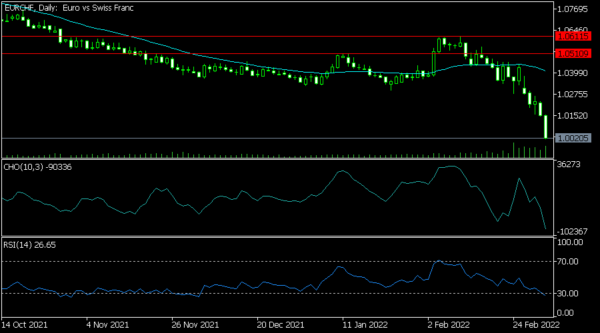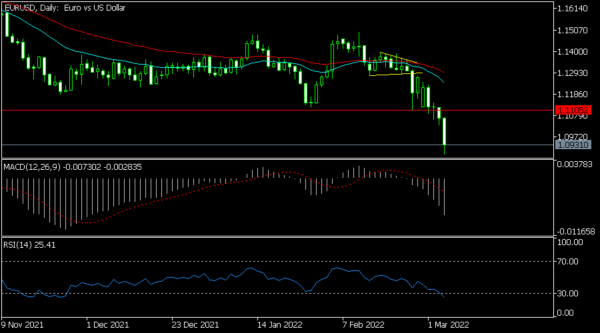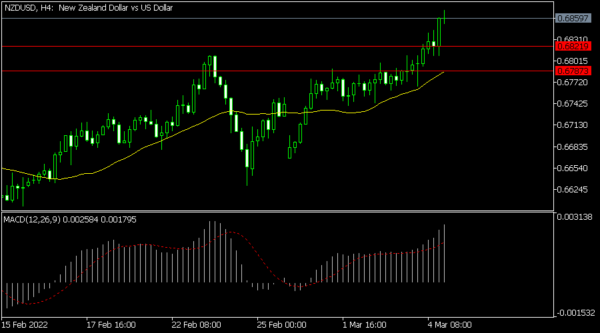The US dollar index continued its bullish trend on Monday morning as investors priced in a more hawkish Fed after the strong jobs numbers that were published on Friday. The data revealed that the American labor market continued to tighten in February as the country reopened. In total, employers added over 600k jobs while the unemployment rate dropped to about 3.8%. The participation rate also edged upwards. The only major blemish in the jobs report was wage growth, which retreated from 5.5% to 5.1%.
The euro continued its bearish trend against key currencies as fighting continued in Ukraine. The Russian invasion has led to mass migration from the country. At the same time, it has led to a significant period of high inflation as oil and gas prices have surged. Just last week, data by Eurostat revealed that inflation in the region is currently at the highest point on record. This inflation at a time when unemployment is so high it could lead to stagflation in Europe. Later today, the key data to watch will be German retail sales and factory orders.
The economic calendar will be a bit muted today meaning that investors will continue focusing on the crisis in Ukraine. The key data to watch will be the UK home price index that will be published on by Halifax. Last week, the number by Nationwide showed that the country’s house prices continued to rise in February. The next figure to watch will be the Swiss unemployment rate data. Analysts expect the data to show that the rate remained intact at about 2.3%. On Friday, the SNB chair said that the bank was trying to find out how to weaken the Swiss franc.
EURCHF
The EURCHF has been in a strong bearish trend in the past few months. And on Friday, the pair settled to the lowest level in years. It is trading at 1.002, which is significantly below this week’s high of 1.0611. The pair has moved below the 25-day and 50-day moving averages while the RSI and the Chaikin oscillator have moved to the lowest level in months. Therefore, the pair will likely continue falling.
EURUSD
Like the EURCHF pair, the EURCHF has crashed to the lowest level since 2020. On the daily chart, the pair has moved below the 25-day and 50-day moving averages. It has also moved below the key support level at 1.1100, which was the lowest point this year. Oscillators have also continued falling. Therefore, the pair will likely continue falling as bears target the next key support at 1.0900.
NZDUSD
The NZDUSD pair has jumped sharply in the past few days as commodity prices have jumped. The pair is trading at 0.6860, which is the highest it has been since January this year. It has moved above the 78.6% Fibonacci retracement level. Also, it has risen above the 25-day and 50-day moving averages while the MACD has also risen. Therefore, the pair will likely keep rising in the coming days.
















